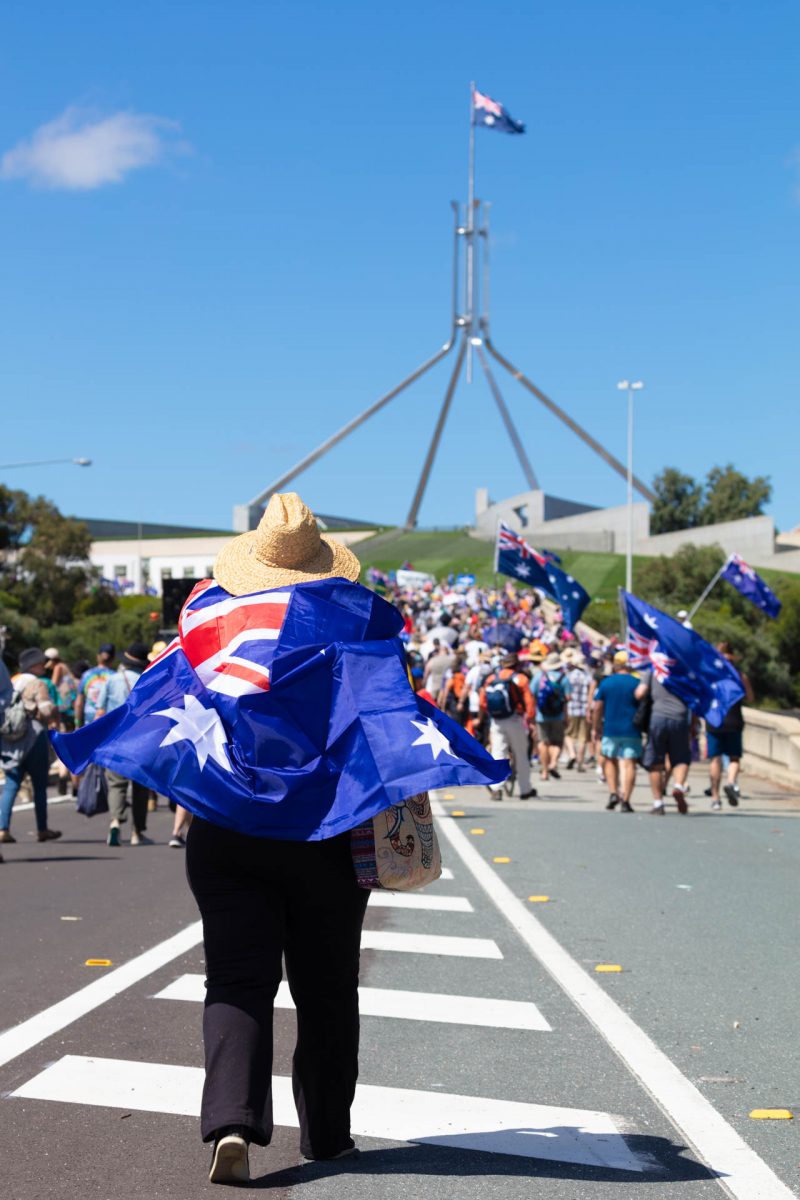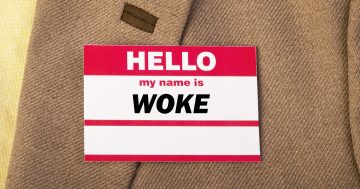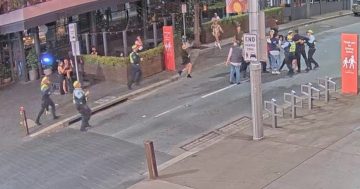
The meaning of the flag can change depending on what it’s representing. Photo: Thomas Lucraft.
Year in Review: Region Media is revisiting some of the best Opinion articles of 2022. Here’s what got you talking, got you angry and got you thinking in 2022. Today, Zoya Patel says she can’t imagine a future where the Australian flag is anything but an emblem of hate.
When my family migrated to Australia in the early 1990s, I distinctly remember loving the identity of being Australian.
My primary school had a morning assembly at the beginning of every week where the flag would be raised and we’d all sing the national anthem. I loved singing the anthem.
The notion of being Australian had been reinforced to me as a positive thing, and I had a real sense of pride in it. When we were naturalised as citizens after four years, my family visited the local council and the Mayor officiated the proceedings. We have loads of photos of the six of us with our certificates, standing in front of the Australian coat of arms, grinning.
Around the same time as we became Australian citizens, Pauline Hanson was elected to Parliament for the first time. I can still remember the rhetoric about migrants going back to where we came from, and the anxiety I felt at the time. A friend told me I could hide at her house if the government tried to send my family back to Fiji – a place I had no memory of and couldn’t think of as ‘home’. I think that was the first time I saw the Australian flag used and associated with a negative message that made me feel alienated as opposed to patriotic.

Senator Hanson has been draping herself in the Australian flag for decades. Image: One Nation.
By the time the Cronulla riots happened in 2005, I had experienced enough racism to be wary of the flag when used by individuals and not institutions. I knew by then that for some, the flag was a symbol of a particular type of Australia, one that didn’t include me or people who looked like me.
Watching young white men draped in the flag, screaming racist abuse and bashing people who they deemed to look un-Australian was enough to cement in me the sensation that the flag was a signal of something ugly and exclusionary.
Fast forward to the last few weeks, where Canberrans have endured the influx of protesters disrupting the city, often driving around tooting their horns in cars adorned with the Australian flag (and other flags). While many of the protesters were focused on anti-vaccination sentiments, a cross-section also demonstrated extreme racist views. Every time I passed someone with a flag flapping from their window, I automatically had a flash of anxiety – a PTSD that made me feel wary, concerned that the driver would see my brown face and wind down their window to tell me to go back to where I came from.
How did we get to this point? I can honestly say I feel more of a sense of allegiance to which Hogwarts house I’m in at this point in my life than I do to a sense of Australian identity (I’ve even sorted my cat into Gryffindor).
As a child, the Australian flag and our national anthem had a simple and positive association for me, to a sense of community, shared values, culture and country. As an adult, I have a more nuanced understanding of colonisation, the need to recognise and reconcile with First Nations Australians, and how patriotism is used as a vessel for racist ideology – but I don’t think that that understanding should have to exclude the potential for a national pride that is predicated on inclusion and harmony, not hate and discord.
Unfortunately, I can’t imagine a future where the flag is anything but an emblem of hate. I feel quite sad when I think of the child I was in the 90s, memorising the words to the national anthem and puffing my chest out in assembly so I could sing loud and clear while facing the flag. That was a brief moment where I was untouched by the racism and hate that has since defined a lot of my experiences as a culturally diverse Australian.



















